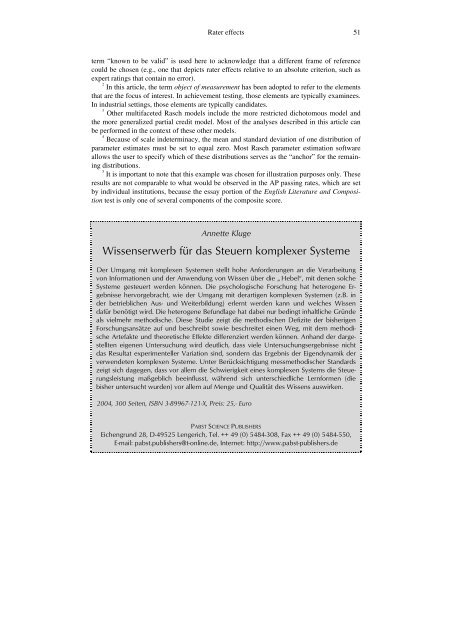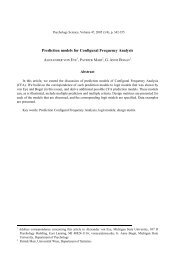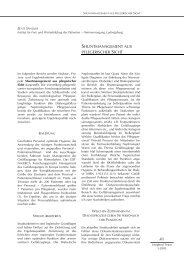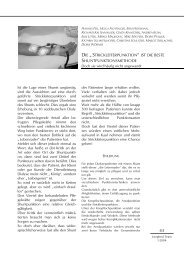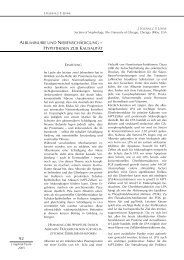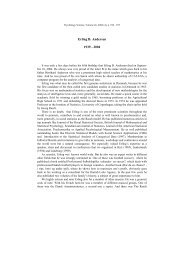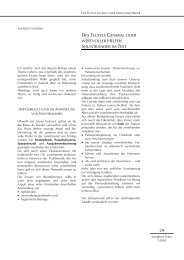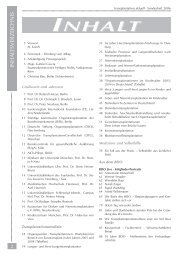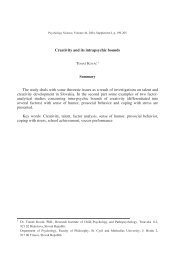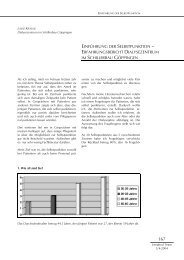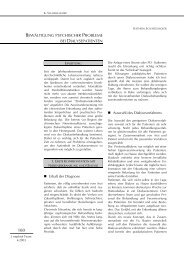Identifying rater effects using latent trait models Abstract
Identifying rater effects using latent trait models Abstract
Identifying rater effects using latent trait models Abstract
You also want an ePaper? Increase the reach of your titles
YUMPU automatically turns print PDFs into web optimized ePapers that Google loves.
Rater <strong>effects</strong> 51<br />
term “known to be valid” is used here to acknowledge that a different frame of reference<br />
could be chosen (e.g., one that depicts <strong>rater</strong> <strong>effects</strong> relative to an absolute criterion, such as<br />
expert ratings that contain no error).<br />
2<br />
In this article, the term object of measurement has been adopted to refer to the elements<br />
that are the focus of interest. In achievement testing, those elements are typically examinees.<br />
In industrial settings, those elements are typically candidates.<br />
3<br />
Other multifaceted Rasch <strong>models</strong> include the more restricted dichotomous model and<br />
the more generalized partial credit model. Most of the analyses described in this article can<br />
be performed in the context of these other <strong>models</strong>.<br />
4<br />
Because of scale indeterminacy, the mean and standard deviation of one distribution of<br />
parameter estimates must be set to equal zero. Most Rasch parameter estimation software<br />
allows the user to specify which of these distributions serves as the “anchor” for the remaining<br />
distributions.<br />
5<br />
It is important to note that this example was chosen for illustration purposes only. These<br />
results are not comparable to what would be observed in the AP passing rates, which are set<br />
by individual institutions, because the essay portion of the English Literature and Composition<br />
test is only one of several components of the composite score.<br />
Annette Kluge<br />
Wissenserwerb für das Steuern komplexer Systeme<br />
Der Umgang mit komplexen Systemen stellt hohe Anforderungen an die Verarbeitung<br />
von Informationen und der Anwendung von Wissen über die „ Hebel“, mit denen solche<br />
Systeme gesteuert werden können. Die psychologische Forschung hat heterogene Ergebnisse<br />
hervorgebracht, wie der Umgang mit derartigen komplexen Systemen (z.B. in<br />
der betrieblichen Aus- und Weiterbildung) erlernt werden kann und welches Wissen<br />
dafür benötigt wird. Die heterogene Befundlage hat dabei nur bedingt inhaltliche Gründe<br />
als vielmehr methodische. Diese Studie zeigt die methodischen Defizite der bisherigen<br />
Forschungsansätze auf und beschreibt sowie beschreitet einen Weg, mit dem methodische<br />
Artefakte und theoretische Effekte differenziert werden können. Anhand der dargestellten<br />
eigenen Untersuchung wird deutlich, dass viele Untersuchungsergebnisse nicht<br />
das Resultat experimenteller Variation sind, sondern das Ergebnis der Eigendynamik der<br />
verwendeten komplexen Systeme. Unter Berücksichtigung messmethodischer Standards<br />
zeigt sich dagegen, dass vor allem die Schwierigkeit eines komplexen Systems die Steuerungsleistung<br />
maßgeblich beeinflusst, während sich unterschiedliche Lernformen (die<br />
bisher untersucht wurden) vor allem auf Menge und Qualität des Wissens auswirken.<br />
2004, 300 Seiten, ISBN 3-89967-121-X, Preis: 25,- Euro<br />
PABST SCIENCE PUBLISHERS<br />
Eichengrund 28, D-49525 Lengerich, Tel. ++ 49 (0) 5484-308, Fax ++ 49 (0) 5484-550,<br />
E-mail: pabst.publishers@t-online.de, Internet: http://www.pabst-publishers.de


